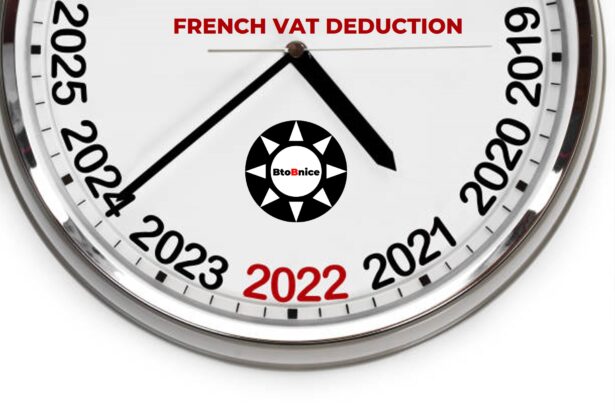Fiscal history of books : reduced EU VAT rates

On this World Book Day, we go through the recent ruling from the French tax administration clarifying the VAT rate applicable to certain works with an incidental editorial contribution, such as the elements of an illustrated board game.
Judged as not meeting the criteria of a book, “a board game designed following a precise and original scenario whose purpose is to allow players to solve investigations, marketed in the form of an illustrated cardboard box composed of a booklet detailing the rules of the game, series of double-sided printed cards, a large illustrated map of a city and a magnifying glass allowing you to find your way on the map » cannot benefit from a reduced VAT rate in France.
French doctrine had already ruled on the non-periodical works devoted to games (crosswords, arrow words, matching words, etc.) and works of certain role-playing games which cannot benefit from a reduced rate of VAT as books. The criterion of significant editorial contribution was thus supplemented by the ratio of non-empty space which must be greater than or equal to two thirds of the total surface area of the work.
VAT rates in Europe
The rules for applying VAT rates by different Member States are governed by the European Directive 2006/112/EC of 11/28/2006.
According to current legislation:
- The standard rate must be above 15%.
- The reduced rate (within the limit of two rates) must be greater than 5%.
Special rates are valid for EU countries which applied them on January 1, 1991:
- Super-reduced rate (less than 5%)
- Zero rate with the right to deduct VAT
- Intermediate rate (known as parking rate) greater than 12%
An extension of special rates to all Member States, with special conditions of application, is planned starting from 01/01/2025.
The goods and services eligible for reduced rates (between 5% and 15%) are specified in the Annex III of the EU VAT Directive.
This includes in particular « books, newspapers and periodicals, including on loan by libraries, other than publications wholly or predominantly devoted to advertising. »
The very definition of a book is extended by the European Commission to brochures, leaflets and similar printed matter, children’s picture, drawing or colouring books, music printed or in manuscript form, maps and hydrographic or similar charts.
History of the e-book
Initially, only works on any type of physical means of support could benefit from reduced VAT rates as books.
With technological progress and invention of e-books and electronic publications, the question of applicable VAT rates was raised by several Member States.
France, as well as Luxembourg, started to apply a reduced VAT rate of respectively 5.5% and 3% to the supply of electronic books on January 1, 2012. The Article 278-0 bis of the French General Tax Code explicitly confirms the application of the reduced rate of 5.5% to books on any type of physical means of support and to those provided electronically, including audio books.
This practice allowed access to culture regardless of the means of support, however, it was contrary to the European VAT legislation until its modernisation in 2018.
Indeed, launched in May 2016, the project to extend reduced VAT rates was definitively adopted by the Council only in October 2018. Thus, in accordance with the COUNCIL DIRECTIVE (EU) 2018/1713 of 06/11/2028 published in the Official Journal of the European Union on 14/11/2018, the application of reduced VAT rates on e-books and electronic publications becomes official within the EU, excluding publications wholly or predominantly consisting of video content or audible music.
At the same time, Member States which had previously applied very reduced rates and zero rates to publications on physical means of support could also apply them to electronic publications.
Definition of book
The book’s definition doesn’t stop there. French doctrine provides detailed indications on the fiscal criteria for books that can benefit from a reduced VAT rate.
BOI-TVA-LIQ-30-10-40: A book is a printed set, illustrated or not, published under a title, having as its object the reproduction of a work from the mind of one or more authors with a view to teaching, the dissemination of thought and culture… In practice, the work must include a sufficient editorial part to give the whole the character of an intellectual work.
Formal conditions, including the accepted ratio of space to be filled by the reader or occupied by advertising, are added to the long list of criteria.
Reform of the EU VAT rates
In accordance with the reform of reduced VAT rates effective within the EU starting from 2025, all Member States will be able to apply, in addition to the two reduced VAT rates (within the limit of 24 points out of 33 from the Annex III), a very reduced rate of less than 5% and a zero rate with the right to deduct the input VAT. The goods and services benefiting from these special rates may be chosen from 7 points (points 1 to 6 and 10c) out of the 33 from the Annex III of the EU Directive. The books listed in point 6 may therefore be taxed by Member States below 5% VAT.
As an option, all Member States will be able to apply intermediate rates above 12% to the same goods and services as those to which these rates applied on 1 January 2021 in other Member States, under the same conditions.
The VAT rate applicable to books will follow legislative changes in the Member States transposing the European Directive, but also internal developments in terms of the definition of specific book’s criteria which must be closely monitored by professionals of the sector.



